#writing-forever
Note
Ok so I was watching gab’s playthrough of Stanley Parable and she got to the bit where Stanley falls into the goal in the soccer game and Narry says that he can't follow Stanley down there, and I wanted to know how that works in your AU. Would Narry try to catch Stanley or smth?
Sorry for the long ask.
Not long at all! No worries. ^.^ And I’m happy I checked out her playthrough! :3
There are certain parts of the Parable that The Narrator can’t access, and the Beta is one of them. Even if Narry tried to catch Stanley there, he’d hit an invisible wall. The Parable is designed to contain The Narrator just as much as it contains Stanley. 👀
He also can’t access the Museum unless The Curator brings him there/let’s him in.
#Asks#writing-forever#nysm!au#now you see me au#Imagine the Bucket version of the Freedom ending#But Narry as Stanley & Stanley as the bucket#tsp#there’s more that I can’t say yet :)
323 notes
·
View notes
Note
Thoughts on people named Sam?
One time, the Sam I was talking to told me about how he had become the world's greatest mathematician by being very good at mathematics and also being very bad at school and it was really hard for him and this sounded so funny to me and then he had a name with the letter "r" in it that sounded like my name and I was really confused for a while
15 notes
·
View notes
Note

All these tags made me believe that this was gonna be the one, ONE AU where sun and moon have no trauma. You craft your words in such delicate ways to make them truthful you are like the fey.
In all honesty though I still really like the AU. that was a super cool twist that I didn't see coming!
OUHH IM SO GLAD !!!! And yes, I think Sun and Moon deserve at least one world where they can always be truly happy 🥺 without a force of evil in the show, I think the virus is the only entity capable of such a position that can provide any true angst at all, though that wouldn’t happen because it’s not like i’m actively running this idea by the fnaf devs and pushing it for a green light by animation industries HDKCJSHD
#the virus has a funny way of infecting characters that it cannot reach by itself tho#think about it!! it can’t infect characters from books; video games; or youtube .. BASICALLY anything not broadcast on tv#and yet i’ve infected a video game character through the power of art and AUs#the pibby virus uses content creators to achieve its goals#i am well aware of this and yet I still treat it like it’s ‘entertainment’ and not the virus’ ultimate evil plan#lololol#anyways#k rambles#ask#writing-forever#toon au#fnaf security breach#fnaf#fnaf au#pibby
27 notes
·
View notes
Note
Idk if this is only for mutuals but
💌
(nope it's for everyone !! :D)
black and gold ballpoint pen
4 notes
·
View notes
Text
DMing is hard. I acknowledge this. Weaving a story with words for long periods of time means you’re gonna say something silly sometimes when your brain blips. And it’s not your fault that it’s so silly that your players share it around turning it into an inside joke, immortalizing your brain fart moment forever.
My DM was narrating a scene between our tiefling rogue and the NPC she was romancing. He was trying to set the mood for their first kiss, up on a tower overlooking the city, looking into each others eyes. They’d just been on a romantic date, there was a bottle of wine between them. And this was their moment.
The NPC leaned in to kiss the rogue and the kiss was, according to our DM, “long and normal.”
The entire session went off the rails. We became ungovernable creatures of hilarity. How long is normal?
We are informed normal is six seconds and we devolve even further into chaotic paroxysm of laughter. The DM desperately tried to rein us in but for the rest of the session everything took a long and normal amount of time.
My betrothed and I would kiss each other while counting to six in our heads then declare afterward, “Ah yes! Long and normal!”
I accidentally told my school team about it, reasoning that they’d at least never meet the DM who lives out of state. They’d say we needed the scene to be the long and normal length, or hold a pose for a long and normal time.
At the end of the year I invited them to my house for a celebratory meal and was surprised when my DM joined the DnD video call early. My teammates looked at him, expressions slowly spreading into evil grins. “Long and normal!” They greeted him.
He turned a look upon me of utter betrayal while I hustled them out of my house.
“It’s been a year!” He cried at the unfairness.
“Maybe it’ll phase out by next year,” I told him.
#and then I wrote it all here to memorialize it forever#ramblies#ffs foibles#funny story#dnd#dnd story#writing#story
8K notes
·
View notes
Text
i want to mention that while yes, the conditions that palestinians live in is horrid, palestine is still a beautiful place.
there are so many stories of people returning from their trip to palestine and all of them saying that they were disgusted and horrified and the living conditions they say the palestinians were in were just awful, and while yes all of that is true, and palestinians do live in ridiculous conditions, i still want to make it clear that palestine is an insanely beautiful place. our mountains are beautiful, our plants are beautiful, our mosques, our churches, our olive trees, our birds. palestine is a beautiful place. it is the birthplace of both christianity and judaism, it is the birthplace of jesus. our temples are astonishing, our food is delicious, our culture is rich, and our diversity is beyond. our dances are beautiful, our clothing, our jewlery, our homes. each and every one of our lives is precious.
go to any palestinian home in the world and you'll see beautiful things. the west wants to get rid of us, to completely decimate every part of our existence, but we will not let them. and we need everyone on our side to help us keep palestine's beauty safe.
#this took me forever to write bc every 3 seconds i was coughing up blood#agh agh agh agh#anyway i had some pictures to go with this post but i felt like it wasn't a good place or smth#palestine#free palestine
8K notes
·
View notes
Text
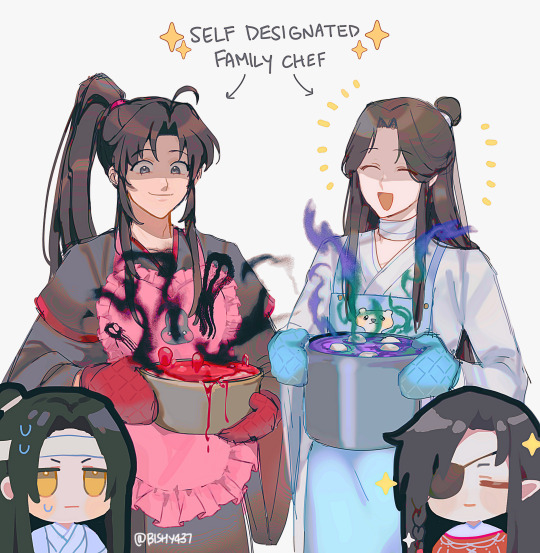

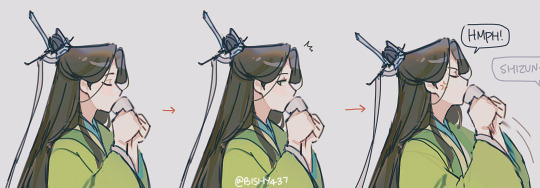
he won
bonus:

#oi oi don’t steal my tags i see u 🫵#svsss#mdzs#moshang#hualian#bingqiu#sqq u spoilt brat#binghe is def the best cook out of the three gongs i’m not saying this lightly#we know lwj can cook from the extras and i can only assume hc can cook bc the only thing he CANT do is write BUT:#xl enjoys cooking so ofc hc is gonna let him express himself culinarily#and wwx is a spice fanatic weirdo who wants to go live his m!lf dreams into the sunset#lwj will not get in the way of that#sqq however is perfectly content having bingmei cook his meals forever and never stepping into a kitchen#scum villian self saving system#scum villain#mo dao zu shi#tgcf#heaven official's blessing#wangxian#mine#luo binghe#shen qingqiu#wei wuxian#lan wangji#xie lian#hua cheng#shang qinghua#mobei jun
7K notes
·
View notes
Text

#love#love quotes#heartbreak#love poetry#poetry#soulmates#poems on tumblr#spilled poetry#spilled thoughts#breakup#spilled writing#spilled words#spilled ink#poems and quotes#poems and poetry#poets on tumblr#love poem#writers and poets#writers on tumblr#writing#writerscommunity#words words words#words#loss#love loss#my forever love
3K notes
·
View notes
Text
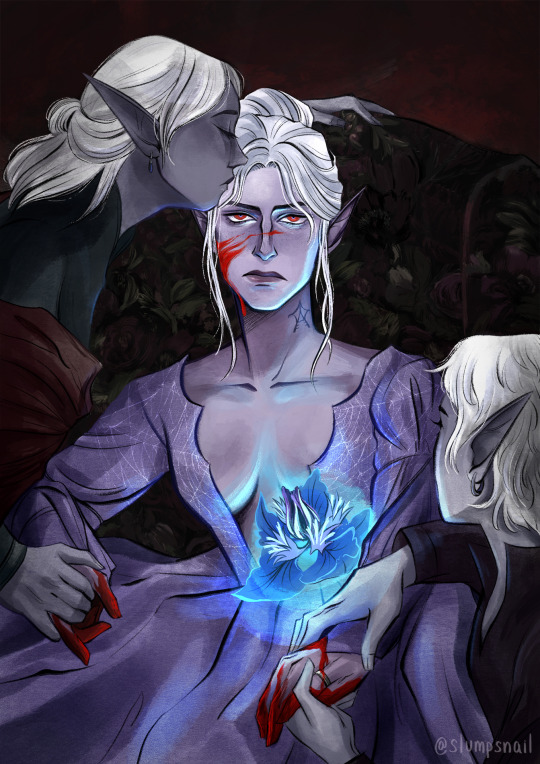
The Reluctant True Soul
#minthara bg3#bg3 minthara#minthara#minthara baenre#baldur's gate 3#bg3#my art#omg this took me forever#i went as far as i could#but happy with it yay#based on the painting by Toulmouche#will write more about it later
2K notes
·
View notes
Text
My followers: And is this “writing” you’ve been “working on” in the room with us right now?
#writing#writeblr#writer things#writing humour#textpost#writing humor#relatable#funny#I genuinely am writing for the first time in a long while#but it’s uh it’s for an angst fanfic for a fandom one wouldn’t expect fic for necessarily#and I’m embarrassed but I’m not because it’s good but you’re never seeing it it’s between me and my ao3 when I finally do finish it#it’s at 6000 words but fr that’s the most I’ve written on a single thing in a long time and it’s still going!#last time I wrote/finished anything in forever was also for this fandom back in November <3 nature is healing#it’s slow going but I’m hoping to finish it before June 😭
10K notes
·
View notes
Text

Missed drawing these two too
Bonuses


#rendoc#still thinking about them a lot#always#hermitshipping#sorry for the weird empty area in the first one. It was my attempt to make it take up less of people's timelines#this art is so embarrassing lol but man I like when Doc's drawn as a big goat man I have no defense I plead the fifth#or well at least it becomes embarrassing when its. shippy#whatever Tumblr people are usually cool so here goes!!#I am 99% a fluff and hurt/comfort person. Idc how frisky these guys get in fanon all I can ever think of is fluff sorry#Also contemplated implementing Doc's accent into the dialogue but I am forever paranoid of offending someone lol#idk how to write accents etc but you guys will make it sound fine in your heads I'm sure#hermitblr#tubby art
2K notes
·
View notes
Text










GREETINGS DIRKJAKE NATION! I got dirkjake withdrawals 😢
jake english.. your transfem nonbinary gay bear swag too much..
#cw suggestive#? i think#just to be safe 🫶#dirkjake#My favourite freaks forever <3#homestuck#dirk strider#jake english#my art#zan0tix#Was almost gona write jake saying kyaaa but i thought thatd be too much.#THIS IS MY JAKE ERA. ENOUGH DOODLING DIRK ALL THE TIME.
2K notes
·
View notes
Text

i forgot to post this sketch of the everthere wedding fic that @pichikui made last year 🤍💜 !!
#the everthere#korrasami#finally read this fic recently#i like to wait forever until i can readmy own fics as a reader#as in its blurry enough atp for me to approach it as a reader#very roundabout way of finding fic up ur alley is to write and wait for ur shit memory to do the rest#my fic
2K notes
·
View notes
Text
The moment Vil fell in love with you, was one of the most vulnerable moments he had ever experienced. It was something that had caught him completely unawares, and never thought he'd fall for someone, much less the prefect of ramshackle.
Spoilers for the end of book 6, if you have not gotten that far.
The ride back to NRC from the island of woe was an exhausting one, to say the least. Everyone was groaning in mild annoyance at Vils sobbing at his now olden state, a wrinkled face with sunken cheeks and grey hair...something he feared more than anything in the world. Nobody actually blamed him, though, for anybody else would react as strongly to see their youth stripped away without even the hint of getting back their original form. Ugly, old, and gross, are all words Vil would go on to describe himself. You felt pity for him of course, but you were just as exhausted as everyone else.
Vil watched you in surprise as you stood up in a sleepy haze, wobbling to the (now) old man and cupping his sunken cheeks into your lively hands.
"Vil," You said sternly, the suddenness of your actions causing him to bite back his sobs for merely a moment.
"What you did for us today," You said with confidence in your tired eyes, "Was the most heroic thing I have ever seen. That was the bravest, most selfless act you could have possibly done, and I truly admire you for it, Vil." Your stern eyes softened with a smile mixed with pity and admiration, unconciously stroking his cheek with your thumb in attempt to sooth his trembling figure.
"We will find a way to get your body back. I understand this is a lot, but you need to hold onto faith." Your hands squished his cheeks together in a teasing and playful manner, purposefully causing him unable to respond verbally. Vil simply nodded, and you continued with passion raising your tone of voice.
"Right now, in my eyes, you are the most beautiful person with the biggest heart of gold I've ever met." You leaned forward and planted a gentle kiss on his cheek, something that drew him back with widened eyes. "Now, you must be incredibly tired from all the fighting we did. Try and rest, okay? You need it." He wanted to tell himself you were simply feeding him words of comfort in order to cease his persistent whining, yet with such confidence dripping with every word and small gesture you had no reason for engaging in, that was how he knew you were genuine.
How could you be so willing to kiss him when he looks like...that? How can you call him beautiful when all he sees are wrinkled hands and spotty skin? The word "heroic" also stuck out to him. Years of being played the villain, always unable to make it to the end of a movie, being discarded as the "bad guy," yet here you were, calling him...your hero. His heart skipped a beat and he could feel heat rise to his cheeks. There's no way you of all people could make him feel so...conflicted.
Yet there you were, with stringy sweaty hair, scratches, bruises, mud riddling your skin from hours of fighting for the world. He noticed how his dorm outfit lay in tatters on your body, and bags under your eyes were apparent as you so shamelessly yawned and sat next to him, falling asleep as you leaned up against his shoulder. This was the brazen prefect of Ramshackle- someone with flaws, attitude, and a disastrous display.
Yet at this moment, all he could think about was just how beautiful you looked, too.
#i've had alot of vil brainrot recently#and azul brainrot too#Dont worry lilia will forever be my number 1 tho#hehehehehehehehehehe#I wanted to give him smoochies from the moment he did such a selfless act#I felt so bad for him#twst headcannons#twst x reader#twst#twisted wonderland#twisted wonderland headcannons#twisted wonderland x reader#twisted wonderland fanfics#twst fanfics#vil schoenheit#vil schoenheit x reader#vil twisted wonderland#vil twisted wonderland x reader#Vil X reader#I could NOT get this out of my head for so long and I now found the right words to write it
2K notes
·
View notes
Text
Fantasy Guide to Interiors



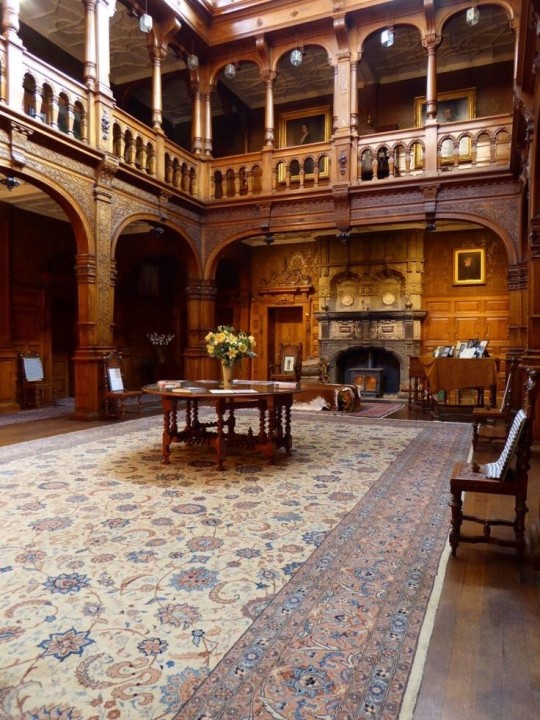
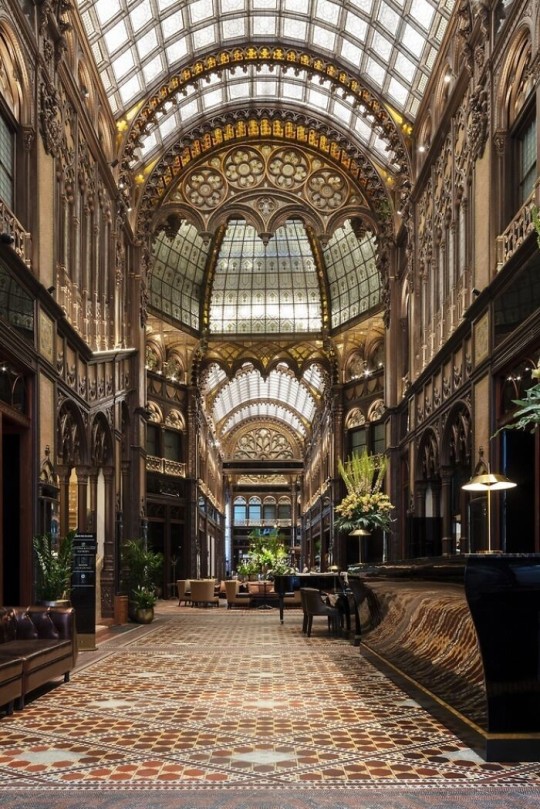
As a followup to the very popular post on architecture, I decided to add onto it by exploring the interior of each movement and the different design techniques and tastes of each era. This post at be helpful for historical fiction, fantasy or just a long read when you're bored.
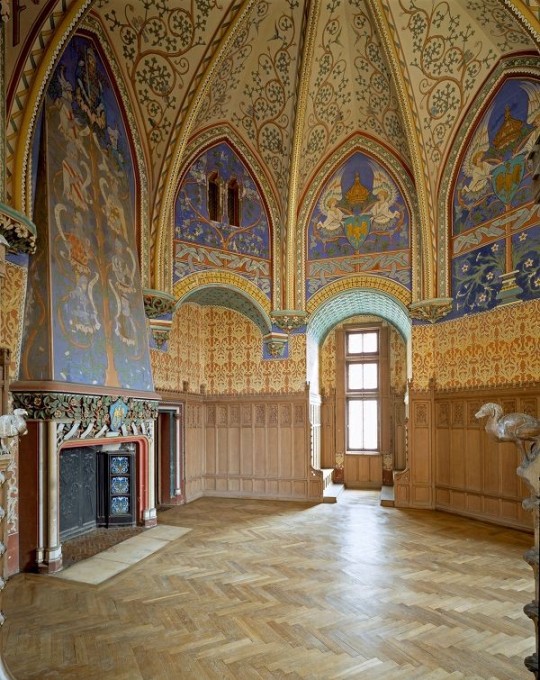


Interior Design Terms
Reeding and fluting: Fluting is a technique that consists a continuous pattern of concave grooves in a flat surface across a surface. Reeding is it's opposite.
Embossing: stamping, carving or moulding a symbol to make it stand out on a surface.
Paneling: Panels of carved wood or fabric a fixed to a wall in a continuous pattern.
Gilding: the use of gold to highlight features.
Glazed Tile: Ceramic or porcelain tiles coated with liquid coloured glass or enamel.
Column: A column is a pillar of stone or wood built to support a ceiling. We will see more of columns later on.
Bay Window: The Bay Window is a window projecting outward from a building.
Frescos: A design element of painting images upon wet plaster.
Mosaic: Mosaics are a design element that involves using pieces of coloured glass and fitted them together upon the floor or wall to form images.
Mouldings: ornate strips of carved wood along the top of a wall.
Wainscoting: paneling along the lower portion of a wall.
Chinoiserie: A European take on East Asian art. Usually seen in wallpaper.
Clerestory: A series of eye-level windows.
Sconces: A light fixture supported on a wall.
Niche: A sunken area within a wall.
Monochromatic: Focusing on a single colour within a scheme.
Ceiling rose: A moulding fashioned on the ceiling in the shape of a rose usually supporting a light fixture.
Baluster: the vertical bars of a railing.
Façade: front portion of a building
Lintel: Top of a door or window.
Portico: a covered structure over a door supported by columns
Eaves: the part of the roof overhanging from the building
Skirting: border around lower length of a wall
Ancient Greece
Houses were made of either sun-dried clay bricks or stone which were painted when they dried. Ground floors were decorated with coloured stones and tiles called Mosaics. Upper level floors were made from wood. Homes were furnished with tapestries and furniture, and in grand homes statues and grand altars would be found. Furniture was very skillfully crafted in Ancient Greece, much attention was paid to the carving and decoration of such things. Of course, Ancient Greece is ancient so I won't be going through all the movements but I will talk a little about columns.
Doric: Doric is the oldest of the orders and some argue it is the simplest. The columns of this style are set close together, without bases and carved with concave curves called flutes. The capitals (the top of the column) are plain often built with a curve at the base called an echinus and are topped by a square at the apex called an abacus. The entablature is marked by frieze of vertical channels/triglyphs. In between the channels would be detail of carved marble. The Parthenon in Athens is your best example of Doric architecture.
Ionic: The Ionic style was used for smaller buildings and the interiors. The columns had twin volutes, scroll-like designs on its capital. Between these scrolls, there was a carved curve known as an egg and in this style the entablature is much narrower and the frieze is thick with carvings. The example of Ionic Architecture is the Temple to Athena Nike at the Athens Acropolis.
Corinthian: The Corinthian style has some similarities with the Ionic order, the bases, entablature and columns almost the same but the capital is more ornate its base, column, and entablature, but its capital is far more ornate, commonly carved with depictions of acanthus leaves. The style was more slender than the others on this list, used less for bearing weight but more for decoration. Corinthian style can be found along the top levels of the Colosseum in Rome.
Tuscan: The Tuscan order shares much with the Doric order, but the columns are un-fluted and smooth. The entablature is far simpler, formed without triglyphs or guttae. The columns are capped with round capitals.
Composite: This style is mixed. It features the volutes of the Ionic order and the capitals of the Corinthian order. The volutes are larger in these columns and often more ornate. The column's capital is rather plain. for the capital, with no consistent differences to that above or below the capital.
Ancient Rome
Rome is well known for its outward architectural styles. However the Romans did know how to add that rizz to the interior. Ceilings were either vaulted or made from exploded beams that could be painted. The Romans were big into design. Moasics were a common interior sight, the use of little pieces of coloured glass or stone to create a larger image. Frescoes were used to add colour to the home, depicting mythical figures and beasts and also different textures such as stonework or brick. The Romans loved their furniture. Dining tables were low and the Romans ate on couches. Weaving was a popular pastime so there would be tapestries and wall hangings in the house. Rich households could even afford to import fine rugs from across the Empire. Glass was also a feature in Roman interior but windows were usually not paned as large panes were hard to make. Doors were usually treated with panels that were carved or in lain with bronze.
Ancient Egypt
Egypt was one of the first great civilisations, known for its immense and grand structures. Wealthy Egyptians had grand homes. The walls were painted or plastered usually with bright colours and hues. The Egyptians are cool because they mapped out their buildings in such a way to adhere to astrological movements meaning on special days if the calendar the temple or monuments were in the right place always. The columns of Egyptian where thicker, more bulbous and often had capitals shaped like bundles of papyrus reeds. Woven mats and tapestries were popular decor. Motifs from the river such as palms, papyrus and reeds were popular symbols used.
Ancient Africa
African Architecture is a very mixed bag and more structurally different and impressive than Hollywood would have you believe. Far beyond the common depictions of primitive buildings, the African nations were among the giants of their time in architecture, no style quite the same as the last but just as breathtaking.
Rwandan Architecture: The Rwandans commonly built of hardened clay with thatched roofs of dried grass or reeds. Mats of woven reeds carpeted the floors of royal abodes. These residences folded about a large public area known as a karubanda and were often so large that they became almost like a maze, connecting different chambers/huts of all kinds of uses be they residential or for other purposes.
Ashanti Architecture: The Ashanti style can be found in present day Ghana. The style incorporates walls of plaster formed of mud and designed with bright paint and buildings with a courtyard at the heart, not unlike another examples on this post. The Ashanti also formed their buildings of the favourite method of wattle and daub.
Nubian Architecture: Nubia, in modern day Ethiopia, was home to the Nubians who were one of the world's most impressive architects at the beginning of the architecture world and probably would be more talked about if it weren't for the Egyptians building monuments only up the road. The Nubians were famous for building the speos, tall tower-like spires carved of stone. The Nubians used a variety of materials and skills to build, for example wattle and daub and mudbrick. The Kingdom of Kush, the people who took over the Nubian Empire was a fan of Egyptian works even if they didn't like them very much. The Kushites began building pyramid-like structures such at the sight of Gebel Barkal
Japanese Interiors
Japenese interior design rests upon 7 principles. Kanso (簡素)- Simplicity, Fukinsei (不均整)- Asymmetry, Shizen (自然)- Natural, Shibumi (渋味) – Simple beauty, Yugen (幽玄)- subtle grace, Datsuzoku (脱俗) – freedom from habitual behaviour, Seijaku (静寂)- tranquillity.
Common features of Japanese Interior Design:
Shoji walls: these are the screens you think of when you think of the traditional Japanese homes. They are made of wooden frames, rice paper and used to partition
Tatami: Tatami mats are used within Japanese households to blanket the floors. They were made of rice straw and rush straw, laid down to cushion the floor.
Genkan: The Genkan was a sunken space between the front door and the rest of the house. This area is meant to separate the home from the outside and is where shoes are discarded before entering.
Japanese furniture: often lowest, close to the ground. These include tables and chairs but often tanked are replaced by zabuton, large cushions. Furniture is usually carved of wood in a minimalist design.
Nature: As both the Shinto and Buddhist beliefs are great influences upon architecture, there is a strong presence of nature with the architecture. Wood is used for this reason and natural light is prevalent with in the home. The orientation is meant to reflect the best view of the world.
Islamic World Interior
The Islamic world has one of the most beautiful and impressive interior design styles across the world. Colour and detail are absolute staples in the movement. Windows are usually not paned with glass but covered in ornate lattices known as jali. The jali give ventilation, light and privacy to the home. Islamic Interiors are ornate and colourful, using coloured ceramic tiles. The upper parts of walls and ceilings are usually flat decorated with arabesques (foliate ornamentation), while the lower wall areas were usually tiled. Features such as honeycombed ceilings, horseshoe arches, stalactite-fringed arches and stalactite vaults (Muqarnas) are prevalent among many famous Islamic buildings such as the Alhambra and the Blue Mosque.
Byzantine (330/395–1453 A. D)
The Byzantine Empire or Eastern Roman Empire was where eat met west, leading to a melting pot of different interior designs based on early Christian styles and Persian influences. Mosaics are probably what you think of when you think of the Byzantine Empire. Ivory was also a popular feature in the Interiors, with carved ivory or the use of it in inlay. The use of gold as a decorative feature usually by way of repoussé (decorating metals by hammering in the design from the backside of the metal). Fabrics from Persia, heavily embroidered and intricately woven along with silks from afar a field as China, would also be used to upholster furniture or be used as wall hangings. The Byzantines favoured natural light, usually from the use of copolas.
Indian Interiors
India is of course, the font of all intricate designs. India's history is sectioned into many eras but we will focus on a few to give you an idea of prevalent techniques and tastes.
The Gupta Empire (320 – 650 CE): The Gupta era was a time of stone carving. As impressive as the outside of these buildings are, the Interiors are just as amazing. Gupta era buildings featured many details such as ogee (circular or horseshoe arch), gavaksha/chandrashala (the motif centred these arches), ashlar masonry (built of squared stone blocks) with ceilings of plain, flat slabs of stone.
Delhi Sultanate (1206–1526): Another period of beautifully carved stone. The Delhi sultanate had influence from the Islamic world, with heavy uses of mosaics, brackets, intricate mouldings, columns and and hypostyle halls.
Mughal Empire (1526–1857): Stonework was also important on the Mughal Empire. Intricately carved stonework was seen in the pillars, low relief panels depicting nature images and jalis (marble screens). Stonework was also decorated in a stye known as pietra dura/parchin kari with inscriptions and geometric designs using colored stones to create images. Tilework was also popular during this period. Moasic tiles were cut and fitted together to create larger patters while cuerda seca tiles were coloured tiles outlined with black.
Chinese Interiors
Common features of Chinese Interiors
Use of Colours: Colour in Chinese Interior is usually vibrant and bold. Red and Black are are traditional colours, meant to bring luck, happiness, power, knowledge and stability to the household.
Latticework: Lattices are a staple in Chinese interiors most often seen on shutters, screens, doors of cabinets snf even traditional beds.
Lacquer: Multiple coats of lacquer are applied to furniture or cabinets (now walls) and then carved. The skill is called Diaoqi (雕漆).
Decorative Screens: Screens are used to partition off part of a room. They are usually of carved wood, pained with very intricate murals.
Shrines: Spaces were reserved on the home to honour ancestors, usually consisting of an altar where offerings could be made.
Of course, Chinese Interiors are not all the same through the different eras. While some details and techniques were interchangeable through different dynasties, usually a dynasty had a notable style or deviation. These aren't all the dynasties of course but a few interesting examples.
Song Dynasty (960–1279): The Song Dynasty is known for its stonework. Sculpture was an important part of Song Dynasty interior. It was in this period than brick and stone work became the most used material. The Song Dynasty was also known for its very intricate attention to detail, paintings, and used tiles.
Ming Dynasty(1368–1644): Ceilings were adorned with cloisons usually featuring yellow reed work. The floors would be of flagstones usually of deep tones, mostly black. The Ming Dynasty favoured richly coloured silk hangings, tapestries and furnishings. Furniture was usually carved of darker woods, arrayed in a certain way to bring peace to the dwelling.
Han Dynasty (206 BC-220 AD): Interior walls were plastered and painted to show important figures and scenes. Lacquer, though it was discovered earlier, came into greater prominence with better skill in this era.
Tang Dynasty (618–907) : The colour palette is restrained, reserved. But the Tang dynasty is not without it's beauty. Earthenware reached it's peak in this era, many homes would display fine examples as well. The Tang dynasty is famous for its upturned eaves, the ceilings supported by timber columns mounted with metal or stone bases. Glazed tiles were popular in this era, either a fixed to the roof or decorating a screen wall.
Romanesque (6th -11th century/12th)
Romanesque Architecture is a span between the end of Roman Empire to the Gothic style. Taking inspiration from the Roman and Byzantine Empires, the Romanesque period incorporates many of the styles. The most common details are carved floral and foliage symbols with the stonework of the Romanesque buildings. Cable mouldings or twisted rope-like carvings would have framed doorways. As per the name, Romansque Interiors relied heavily on its love and admiration for Rome. The Romanesque style uses geometric shapes as statements using curves, circles snf arches. The colours would be clean and warm, focusing on minimal ornamentation.
Gothic Architecture (12th Century - 16th Century)
The Gothic style is what you think of when you think of old European cathedrals and probably one of the beautiful of the styles on this list and one of most recognisable. The Gothic style is a dramatic, opposing sight and one of the easiest to describe. Decoration in this era became more ornate, stonework began to sport carving and modelling in a way it did not before. The ceilings moved away from barreled vaults to quadripartite and sexpartite vaulting. Columns slimmed as other supportive structures were invented. Intricate stained glass windows began their popularity here. In Gothic structures, everything is very symmetrical and even.
Mediaeval (500 AD to 1500)
Interiors of mediaeval homes are not quite as drab as Hollywood likes to make out. Building materials may be hidden by plaster in rich homes, sometimes even painted. Floors were either dirt strewn with rushes or flagstones in larger homes. Stonework was popular, especially around fireplaces. Grand homes would be decorated with intricate woodwork, carved heraldic beasts and wall hangings of fine fabrics.
Renaissance (late 1300s-1600s)
The Renaissance was a period of great artistry and splendor. The revival of old styles injected symmetry and colour into the homes. Frescoes were back. Painted mouldings adorned the ceilings and walls. Furniture became more ornate, fixed with luxurious upholstery and fine carvings. Caryatids (pillars in the shape of women), grotesques, Roman and Greek images were used to spruce up the place. Floors began to become more intricate, with coloured stone and marble. Modelled stucco, sgraffiti arabesques (made by cutting lines through a layer of plaster or stucco to reveal an underlayer), and fine wall painting were used in brilliant combinations in the early part of the 16th century.
Tudor Interior (1485-1603)
The Tudor period is a starkly unique style within England and very recognisable. Windows were fixed with lattice work, usually casement. Stained glass was also in in this period, usually depicting figures and heraldic beasts. Rooms would be panelled with wood or plastered. Walls would be adorned with tapestries or embroidered hangings. Windows and furniture would be furnished with fine fabrics such as brocade. Floors would typically be of wood, sometimes strewn with rush matting mixed with fresh herbs and flowers to freshen the room.
Baroque (1600 to 1750)
The Baroque period was a time for splendor and for splashing the cash. The interior of a baroque room was usually intricate, usually of a light palette, featuring a very high ceiling heavy with detail. Furniture would choke the room, ornately carved and stitched with very high quality fabrics. The rooms would be full of art not limited to just paintings but also sculptures of marble or bronze, large intricate mirrors, moldings along the walls which may be heavily gilded, chandeliers and detailed paneling.
Victorian (1837-1901)
We think of the interiors of Victorian homes as dowdy and dark but that isn't true. The Victorians favoured tapestries, intricate rugs, decorated wallpaper, exquisitely furniture, and surprisingly, bright colour. Dyes were more widely available to people of all stations and the Victorians did not want for colour. Patterns and details were usually nature inspired, usually floral or vines. Walls could also be painted to mimic a building material such as wood or marble and most likely painted in rich tones. The Victorians were suckers for furniture, preferring them grandly carved with fine fabric usually embroidered or buttoned. And they did not believe in minimalism. If you could fit another piece of furniture in a room, it was going in there. Floors were almost eclusively wood laid with the previously mentioned rugs. But the Victorians did enjoy tiled floors but restricted them to entrances. The Victorians were quite in touch with their green thumbs so expect a lot of flowers and greenery inside. with various elaborately decorated patterned rugs. And remember, the Victorians loved to display as much wealth as they could. Every shelf, cabinet, case and ledge would be chocked full of ornaments and antiques.
Edwardian/The Gilded Age/Belle Epoque (1880s-1914)
This period (I've lumped them together for simplicity) began to move away from the deep tones and ornate patterns of the Victorian period. Colour became more neutral. Nature still had a place in design. Stained glass began to become popular, especially on lampshades and light fixtures. Embossing started to gain popularity and tile work began to expand from the entrance halls to other parts of the house. Furniture began to move away from dark wood, some families favouring breathable woods like wicker. The rooms would be less cluttered.
Art Deco (1920s-1930s)
The 1920s was a time of buzz and change. Gone were the refined tastes of the pre-war era and now the wow factor was in. Walls were smoother, buildings were sharper and more jagged, doorways and windows were decorated with reeding and fluting. Pastels were in, as was the heavy use of black and white, along with gold. Mirrors and glass were in, injecting light into rooms. Gold, silver, steel and chrome were used in furnishings and decor. Geometric shapes were a favourite design choice. Again, high quality and bold fabrics were used such as animal skins or colourful velvet. It was all a rejection of the Art Noveau movement, away from nature focusing on the man made.
Modernism (1930 - 1965)
Modernism came after the Art Deco movement. Fuss and feathers were out the door and now, practicality was in. Materials used are shown as they are, wood is not painted, metal is not coated. Bright colours were acceptable but neutral palettes were favoured. Interiors were open and favoured large windows. Furniture was practical, for use rather than the ornamentation, featuring plain details of any and geometric shapes. Away from Art Deco, everything is straight, linear and streamlined.
#This took forever#I'm very tired#But enjoy#I covered as much as I could find#Fantasy Guide to interiors#interior design#Architecture#writings#writing resources#Writing reference#Writing advice#Writer's research#writing research#Writer's rescources#Writing help#Mediaeval#Renaissance#Chinese Interiors#Japanese Interiors#Indian interiors#writing#writeblr#writing reference#writing advice#writer#spilled words#writers
3K notes
·
View notes
Text
grian as the strange man who appears suddenly on gem’s dock with no explanation. no one knows who he is.
no one saw him arrive and he has no car.
he’s never bought anything from the store, and a few locals said they saw him simply cooking and eating the fish he catches on the spot.
the only belongings he seems to own are his fishing gear.
when asked where he lives, he points to the cliff. there is a tiny blue house there, balancing precariously on wooden stilts. the house has never been there and no one’s seen it before, but the local gas attendant pulled up a 40 year old photo of her grandma on the beach, and sure enough, the tiny house is there, a wee speck of color hanging like a barnacle on the cold, wet bluff.
the age of his mysterious little home aside, no one’s sure when he visits it. he’s at his little dock before the earliest ships cast out, and the sickly glow of his lantern can be seen long into the coldest of nights.
the man has pulled the strangest things from the ocean. fish, to be sure, but other, stranger things. lily pads, far from their native biomes. fishing poles, tattered and worn, of various makes and styles- some look positively ancient. boots. giant shells with twisted patterns to match no living thing. a genuine horse saddle once. bowls. a bone that looked just a bit like a human femur.
and books. perfect, unblemished books, nearly glowing with some kind of energy and filled with a script both unfamiliar and unsettling to see.
he opens them each with a breathless anticipation that tastes like brine or maybe tears.
but whatever he sees in them is not what he wants, and each book is tossed aside with resigned disgust and something like despair, before the weathered pole is taken up to cast a line to sea once more.
#short story#im so out of practice writing help#i refuse to edit this because ill just end up shoving it in drafts forever#grian#hcx#hermitcraft#mcyt#op#mouse’s writings
2K notes
·
View notes